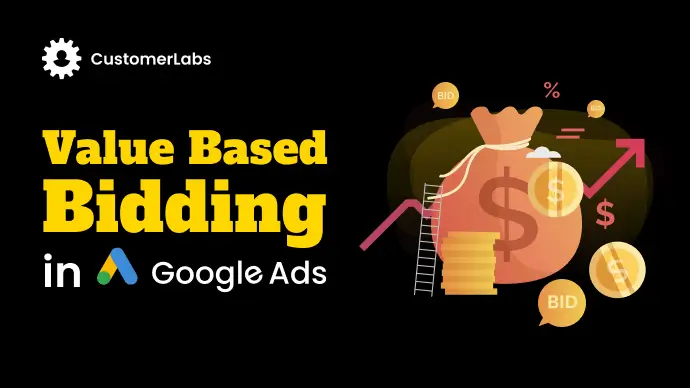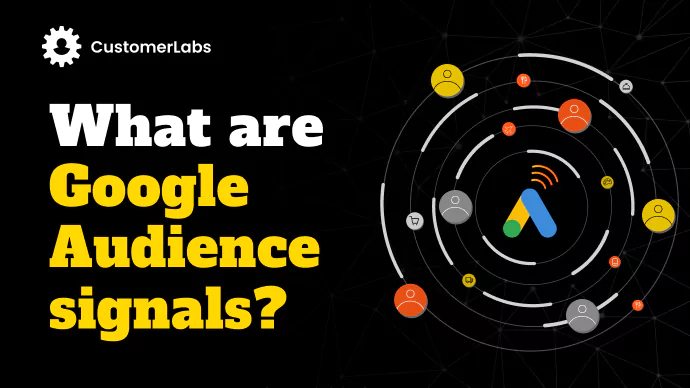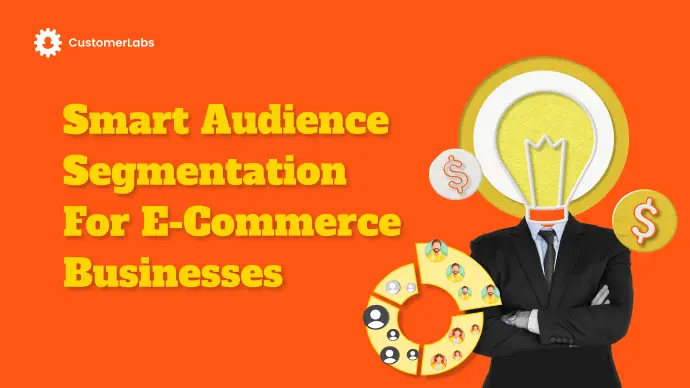Cost per lead (CPL) is the leading indicator guiding marketers. CPL makes it evident if the ads for the business are at the make-or-break stage. Marketers often focus on increasing everything – performance, leads, conversions, etc. But they try to reduce this metric – the cost per lead. And it has been a persistent challenge for marketers to do so.
It might sound like magic if I say that – with a few tweaks, you can reduce the cost per lead by at least 20%!
But it is possible beyond that in a legitimate way. So, let us delve in and understand how to reduce the cost per lead.
What is the cost per lead?
The cost per lead is the money spent to generate one lead. It’s calculated by dividing the total ad spend by the total leads generated.
Cost per lead = (Total Cost / Total Leads)
Why is the cost per lead high for marketers in general?
Before jumping to know how to optimize or reduce the cost per lead, let us understand why the cost per lead is even higher in the first place. It all starts with the ad spend. When you spend more money and get very less leads, your cost per lead will be high.
So, why will you get very few leads despite spending more money?
There are various reasons why the cost per lead might be high – like ad creative, ad messaging not relevant to the landing page, not conveying correctly what you offer, and many more. Let’s say you have fixed all the ad creative stuff, ad messaging stuff, etc. There will still be one crucial thing you did not fix.
No relevant DATA
The ad algorithms drive crazy without relevant data. So, when you do not give good data, it targets broad and won’t be able to target relevant audiences. To understand, it is like a fisherman trying to spread his net in an ocean on the top layers hoping to catch fish.
But the data privacy updates such as iOS14.5+ and third-party cookie deprecation, have become the leakages or holes in the net. It became very difficult for the ad platforms to collect data signals and optimize the targeting.
Without precise ad targeting, the messages aren’t relevant to the relevant audience. The lack of personalization in the ads made people who were not interested in the service see or click the ad. Therefore, the cost per lead spiked up leaving the marketers in troubled waters.
How first-party data reduces the cost per lead ?
First-party data helps you understand your audience better and therefore, know which audience you are targeting. With precise targeting and relevant ad messages, you can increase personalization, and therefore, attract more leads by spending less compared to without first-party data.
To send this first-party data without signal loss to ad platforms, you need to send the data on the server side. For example, to sync your first-party data to Meta you must implement Conversions API. Meta’s Conversions API is a tool that helps connect your server with Meta Ads’ server and send the data without any signal loss.
Ad platforms train themselves on this first-party data and drive to find the right audience.
Sending first-party data through server-side connections helps you increase custom audience match rate, and gives better event match quality.
But that is not all.
Multiple strategies like retargeting, budget split, and nurturing your ToFu campaigns help you reduce your cost per lead using first-party data.
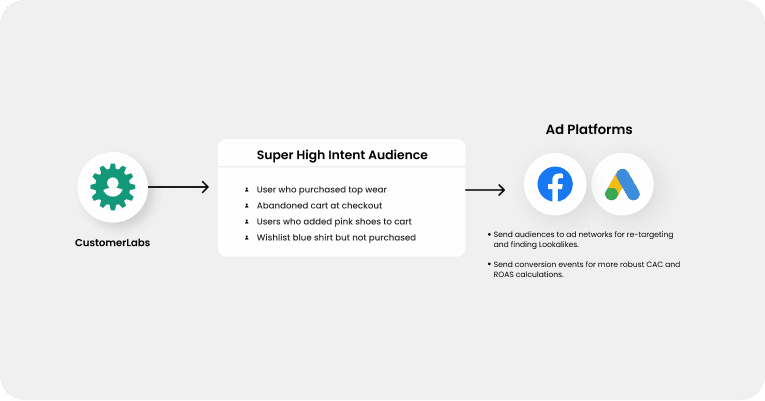
Retargeting the middle of the funnel
Around 98% of your website visitors land on your website and leave without submitting any form or taking any action. Generally, marketers miss out on this gold mine of anonymous website visitors as they are unsure how to identify and activate these anonymous website visitors. These users are confused and are in the loop of the decision-making process.
If you are using CustomerLabs 1PD Ops, you can….
- Segment these anonymous website visitors who did not submit any form or provide any details such as name, email address, phone number, etc., or any other segment of your choice.
- Activate them on Meta and Google Ads with one-click audience activation.
- Target these middle-of-the-funnel audiences on the ad platforms.
- Increase your conversion rate.
Budget Split – 60:30:10
To leverage the full potential of first-party data, you need to split your ad budget into 3 instead of the traditional 80 to 90% for the Top of the funnel and 10 to 20% for the Bottom of the funnel. Have 60% of your budget for the top of the funnel, 30% for the mid-funnel, and 10% for the bottom of the funnel.
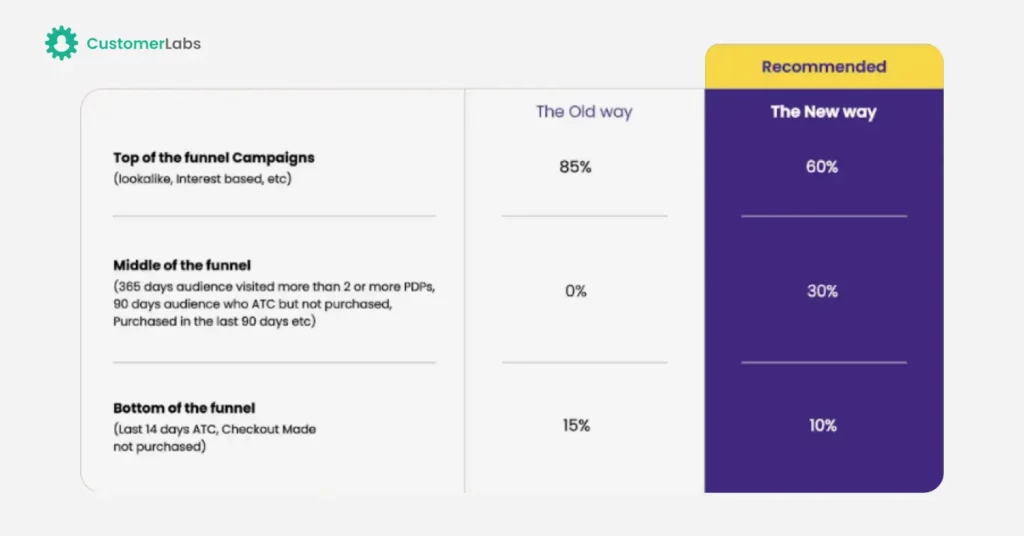
This 30% of your ad budget goes towards activating the mid-funnel audiences. It includes advanced audience segments such as the total website visitors in the last 180 days who did not submit any form, or people who have viewed your high-intent pages such as pricing, etc., or people who spent more time on a particular page. These audiences fell into the infinite loop of exploration and evaluation.
The 30% budget towards nurturing the middle of the funnel will help you drive the middle of the funnel audiences towards the next stages of the funnel and finally improve your conversion rates. By splitting your ad budget, you reduce your CPL and also improve your LTO (lead to opportunity) rate by using first-party data in your ad campaigns.
Nurturing the top of the funnel campaigns
Just giving 60% of the budget alone will not be sufficient to drive your top-of-the-funnel campaigns effectively. You must nurture these top-of-the-funnel campaigns by training the ad campaigns with high-quality first-party data.
Once the algorithm trains on your data, it will find the right high-intent audience with better targeting. Personalized messaging with better targeting increases your conversion rate.
Note: To train the algorithm on your first-party data, start collecting it and sending it in near real-time.
Achieving 20% dip in CPL using first party data
Studies show that implementing the above 1st party data strategies will help achieve at least a 20% dip in your cost per lead. 20% dip is not the average. It is the minimum dip you see when you effectively combine first-party data with your marketing strategies. However, it depends on how effective your marketing strategies are.
Imbibe first-party data into your marketing strategies as the world is moving towards a cookieless future and having first-party data is crucial. First-party data Ops is going to be the future and to deal with it, you need to equip your business with first-party data.
The real impact of first-party data on cost per lead
Dundas Life, a life insurance company in Canada, combined first-party data with their existing marketing strategies. Their marketing team started using first-party data collected with the help of CustomerLabs and have seen better results as below:
- 60% reduction in CPL for ToFu (Top of the funnel)
- 67% reduction in CPL for MoFu (Middle of the funnel)
- A 2X increase in MoFu (middle of the funnel) leads.
The above results are in comparison to their campaign performance before using first-party data with other things constant.
Read the full case study of Dundas Life to know more.
Conclusion
In the dynamic landscape of digital marketing, the reliance on first-party data emerges as the game-changer. It’s not just a tactic; it’s a strategic shift that propels your ad campaigns toward efficiency and success.
Remember this: the era of navigating troubled waters ends if you embrace first-party data. 1st party data helps you achieve more than merely reducing your cost per lead (CPL). You have seen how Dundas Life cut their cost per lead by 60%! The results speak for themselves.
What are you waiting for? Start collecting and activating your first-party data across platforms of your choice to reduce your CPL, improve your LTO, optimize your ad spend, and finally maximize your ad campaign performance.

